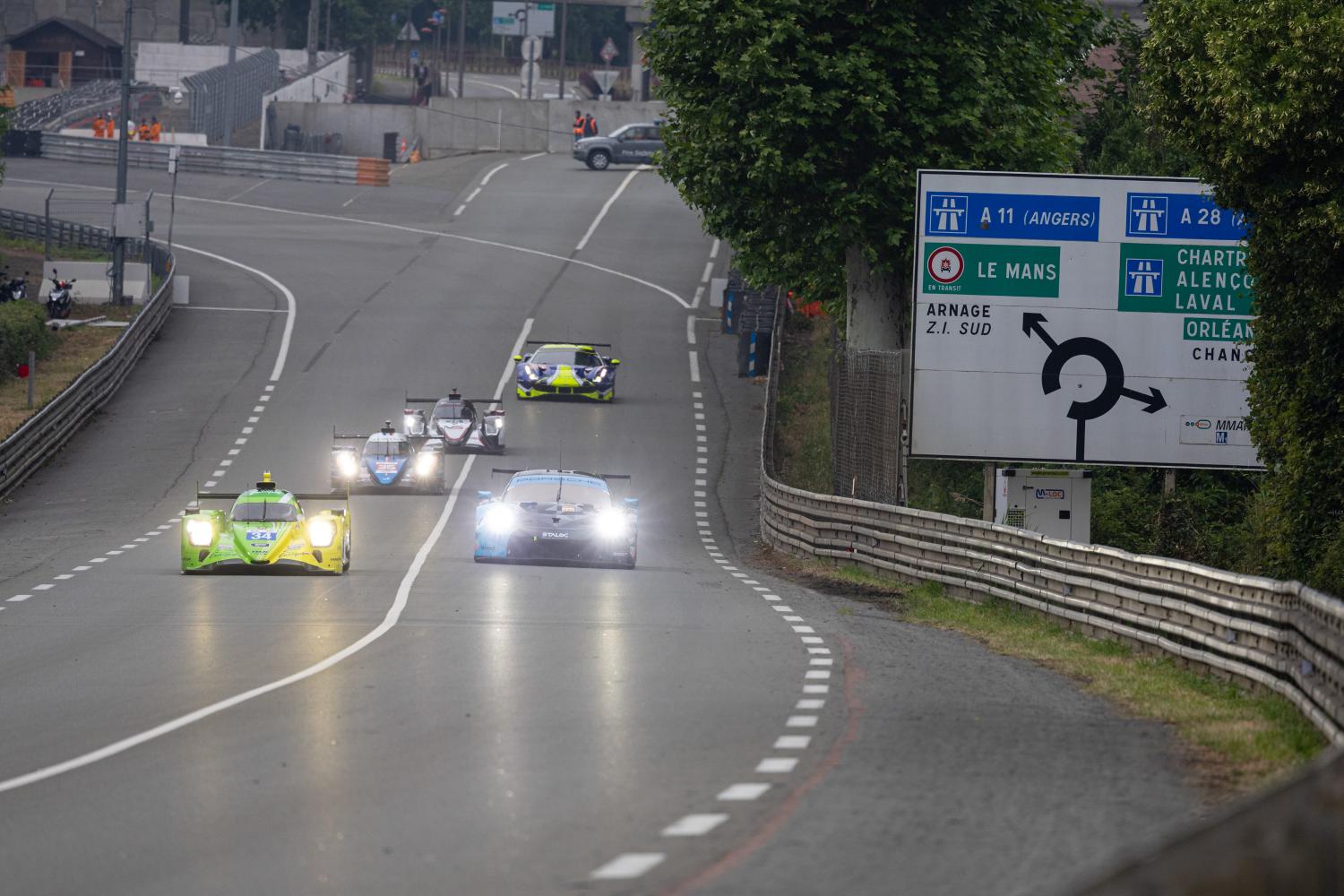McLaren Racing to join the Hypercar fray in 2027
McLaren Racing is set to join the Hypercar grid for the 2027 season of the FIA WEC Endurance World Championship, with aspirations of a triumphant return to 24 Hours of Le Mans.
Read the article
24h Le Mans
Despite its two chicanes, the Mulsanne Straight requires immeasurable courage on the part of drivers at the the 24 Hours of Le Mans as they reach dizzying speeds.
The Mulsanne Straight serves as the first 5.8 km of road tying Le Mans to Tours, but every year it closes to traffic and becomes the stomping grounds of drivers at the 24 Hours. On this legendary stretch of the circuit, Hypercar drivers reach nearly 340 kph between two barriers separated by six or seven meters. The danger is palpable. Prema Orlen Team's #9 ORECA 07-Gibson driver Louis Delétraz: "In the Mulsanne Straight, the asphalt is not smooth. The car gets pulled from right to left and wind speed also affects how it handles. These are details you don't see on T.V. but that we need to take into account."
Accessible only to drivers and marshals, the Mulsanne Straight is both mythical and fascinating to spectators. IDEC SPORT Racing's #48 ORECA driver Patrick Pilet: "There is an exciting section that can make the difference if you take the chicanes well." Rookie drivers remember their first time on the Mulsanne Straight for the rest of their lives. Delétraz: "My first time was in 2019 with Rebellion Racing's Rebellion R13-Gibson and I quickly got up to 350 kph. I asked myself what I was even doing there. I was deeply impressed and it really hit me." Pilet: "It really seemed more narrow than it does on T.V. (laughs, ED.). It felt like a tunnel."
The Mulsanne Strraight is the easiest stretch of the circuit to overtake slower cars. The speed difference compared to LMGTE cars typically makes life easier for Hypercar and LMP2 class drivers, but not always. Pilet: "Sometimes overtakings are down to a millimeter. You have to stay focused because at 330 kph, you cover a lot of meters in a second and you cannot mess up the braking at the chicanes." Drivers become accustomed to the speed across the laps. Delétraz: "After my first 24 Hours when I returned to Formula 2 it felt very slow to be going 300 kph. Then, when I took the freeway to go home, I really felt like I was going in slow motion. In slower spots I truly felt like I could get out of my car and walk alongside it."
Remember it was in fact in the Mulsanne Straight that an extraordinary feat in the history of racing unfolded. On 11 June 1988, a WM P88 equipped with a Peugeot engine reached a speed of 405 kph.
Every year since the race was created in 1923, fates are decided in the Mulsanne Straight. Spectators are left breathless with each overtaking and later have the opportunity to drive the emblematic road themselves as it is open to traffic 355 days a year, but with a speed limit of 90 kph.
In the video below, take a tour of the circuit with #7 Toyota GR10 Hybrid driver Kamui Kobayashi during last year's Hyperpole and see the Mulsanne Straight (starting at the 35 second mark) at dusk.